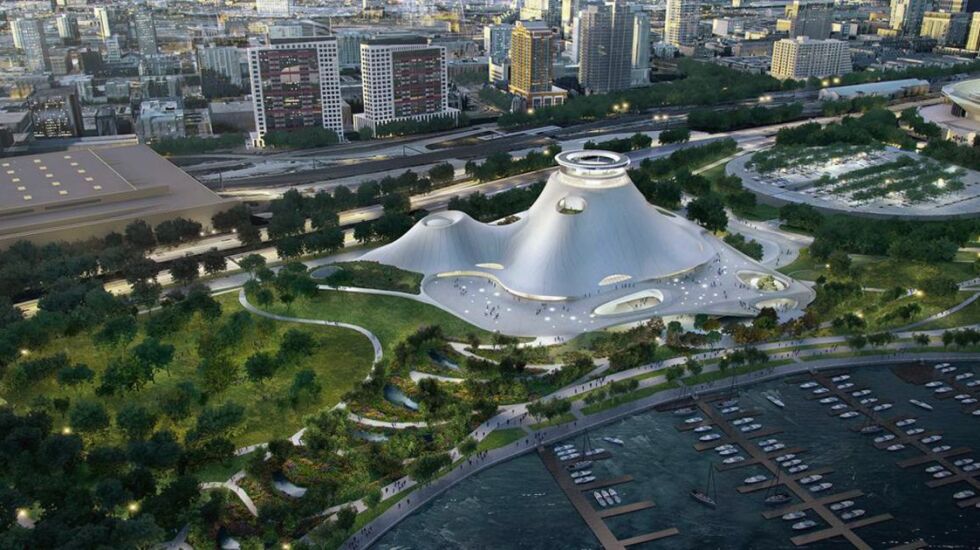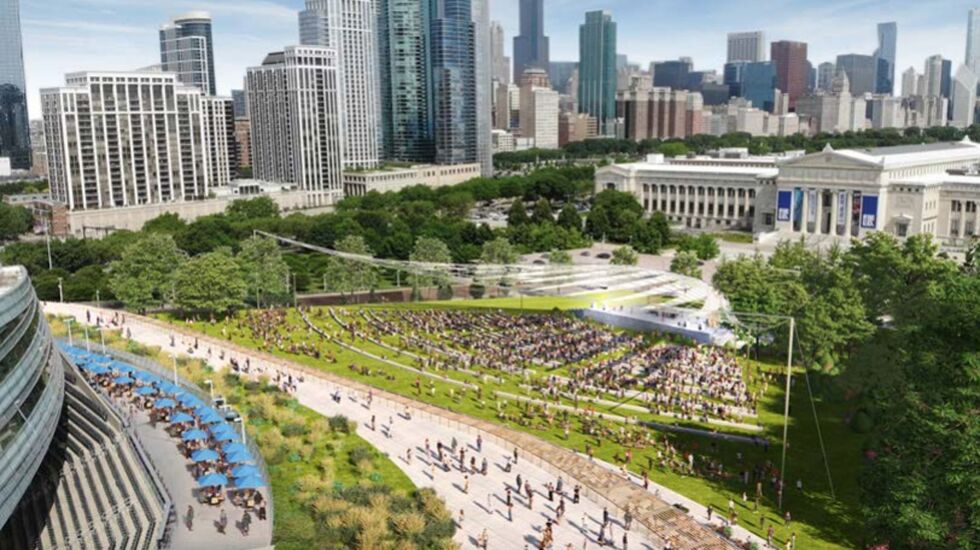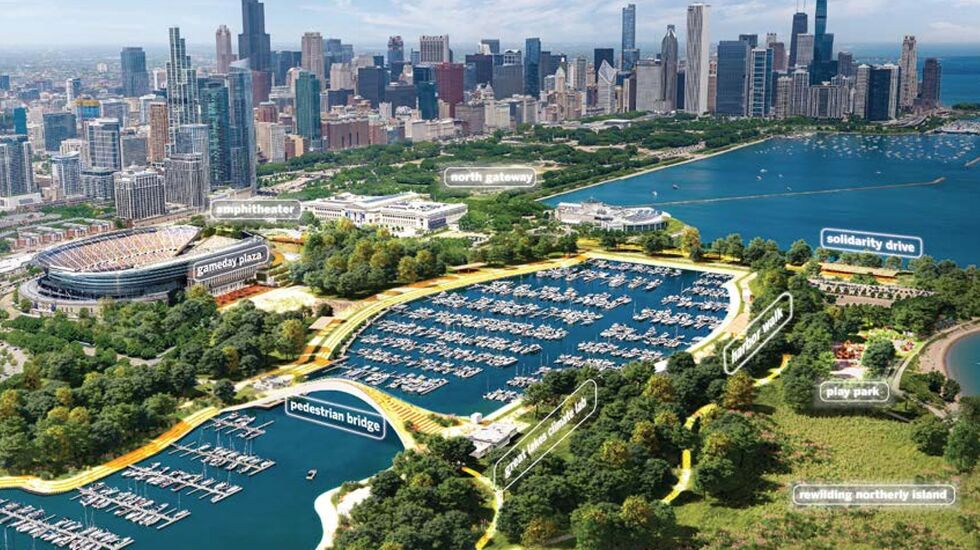
There’s “not a lot of hope” that Chicago can keep the Bears — even at a domed Soldier Field — but a new “vision” to re-imagine the museum campus can still reclaim parkland and make Northerly Island the nature preserve it was intended to be, a parks advocate said Tuesday.
Friends of the Parks Executive Director Juanita Irizarry served on the 23-member working group that unveiled its ambitious, 50-page plan last week.
She argued the infamous legal battle that forced movie mogul George Lucas to cancel plans to build a $743 million museum on 17 acres lakefront land near Soldier Field set the stage for this moment.
Never mind that an angry Mayor Rahm Emanuel derisively called the group “Friends of the Parking Lot” for killing his pet project and leaving behind a surface parking lot used by Bears fans a handful of days each year.
“That fight was all about this moment. How can we turn these concrete paths on our lakefront into more green space?” Irizarry told the Sun-Times.
“We are thrilled that there were serious conversations about how to minimize surface parking lots.”

Although she is an open space advocate, Irizarry is also a realist. She does not expect “all surface parking lots will disappear” at Soldier Field.
But she is justifiably excited about at least beginning to honor the promise then-Mayor Richard M. Daley made years ago, when he created the Museum Campus: moving Soldier Field parking lots to the west side of DuSable Lake Shore Drive.
“There were serious conversations about how to utilize other existing parking lots, for example Millennium Park, where there is under-utilization at certain times of the day and certain parts of the week to get folks to park there remotely and then be able to take shuttles and other modes of transportation,” she said.
When Daley famously sent in a fleet of bulldozers to carve giant X’s into the only runway at Meigs Field, the goal supposedly was to turn Northerly Island into a nature park that would provide a genuine urban oasis.
Instead came Huntington Bank Pavilion, a 30,000-seat venue for outdoor concerts. It was supposed to be temporary, but has been open for 17 years and counting.

The working group called the pavilion “incongruous” with Northerly Island and recommended removing it, and building a 9,000-seat venue for outdoor concerts between Soldier Field and the Field Museum.
The recommendation was music to Irizarry’s ears.
“Friends of the Parks has, for a long time, been saying that the Huntington venue needed to go. It’s a bad place for a concert venue and Northerly Island is often blocked off to other uses when there is an event going on” there, she said.
“We are thrilled at talk of removing that. … It was not meant to be there permanently. The Park District used to tell us all the time that it was there to generate revenue to help pay off the costs associated with developing Northerly Island and once those costs were paid off, it would go. That has turned out not to be the case.”
The proposal to create a pedestrian bridge to Northerly Island over Burnham Harbor is potentially costly and not among, what Irizarry calls the report’s “low hanging fruit.”
But the need is undeniable.
“Northerly Island is quite long and walking all the way out there along Solidarity Drive, then all the way out to the point is a long walk. So part of the idea was to have another access point to it. And it is inspired by past World’s Fair activities there,” she said.
To restore Northerly Island and protect it from “additional erosion damage,” the report resurrects the idea of “barrier reefs” once suggested by renowned Chicago architect Jeanne Gang. That would “result in a man-made lagoon with the potential for snorkeling, calm water for boating and deep water swimming,” the report states.

The cost — anywhere from $100 million to $300 million — might sound exorbitant.
But, Irizarry argued, Northerly Island was “one of those early indicators of places where revetments created by the Army Corps of Engineers” were not “standing up to the frequency and severity of storms.”
“The islands idea … might be something we need to do in other places along our lakefront as well, in order to protect parks and homes and other places along the lake that are being battered by erosion,” she said.
“All of these plans tend to be inspirational and visionary. There are part of them that don’t get done. But those that are related to lakeshore erosion are going to be particularly important. … And the city is gonna have to find ways to address these things.”







